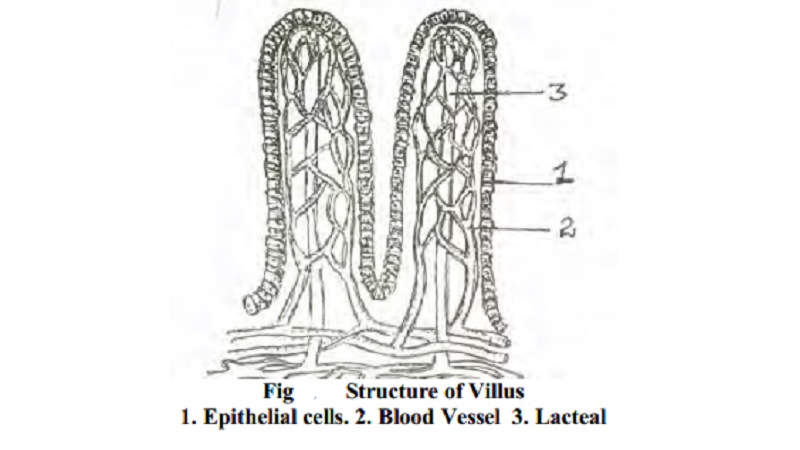Chapter: 11th 12th std standard Class Nursing Health Care Hospital Hygiene Higher secondary school College Notes
Absorption of Food in Human Body

ABSORPTION OF FOOD
Absorption is the process by which
water, minerals, vitamins and end products of digestion are absorbed through
the mucosa of alimentary canal (especially the small intestines) into blood
stream either directly or via lymphatic vessels.
In the stomach there is little absorption. Water, alcohol,
glucose and simple salts are absorbed to a certain degree. The main absorption
occurs in small intestines especially in the lower (ileum) part, the upper part
of the small intestine is mainly associated with the process of digestion.
The mucous membrane of small intestine is covered with
minute finger like projections known as villi.
Each villus contains arteriole, a venule, a capillary network and a lacteal
(lymphatic vessel).
Nutrients that diffuse through the
epithelial cells which covers the villus are able to pass through the capillary
walls and the lacteal enters the blood.
About 90% of all absorption takes
place throughout the length of the small intestine. The other 10% occurs in the
stomach and large intestine.
Both monosaccharides and amino acids are absorbed by a
positive pressure gradient between the intestinal content and the blood as well
as by an active process involving enzymatic reactions and transported in the
blood stream to the liver via the hepatic portal system.
The excess amount of glucose is
converted into glycogen and stored in the liver, when need arises glycogen is
converted into glucose and is utilized by the body.
Structure
of Villus : 1. Epithelial cells. 2. Blood Vessel 3.
Lacteal
Vitamin K which are synthesized by the bacteria in the colon
are absorbed from the large intestine. Large quantities of water are however
absorbed from the large intestine and the fluid content of the small intestine
are converted into the pasty consistency and ejected through the opening called
the anus.
Movements of the gastro intestinal
tract
Deglutition is
the process by which the masticated food
is transported across the pharynx and reaches the stomach. Due
to contractile movements of the stomach, the food is well
mixed up with gastric juice.
After being in the stomach for 3 or
4 hours the pyloric sphincter opens pushing the food into the duodenum.
The
intestine shows three important types of movements. They are:
Pendular movement These
movements are induced by contraction
of the circular and longitudinal muscles of the intestine. This movement
contributes to the thorough mixing of chyme with the digestive juice.
Segmental movement: This
movement occurs by the contraction
of the circular muscles, which produces transverse folds, dividing the
intestine into short segment.
Peristaltic Movement: It is the wave like contraction of the alimentary canal, which propels the food through the gastro
intestinal tract.
Related Topics